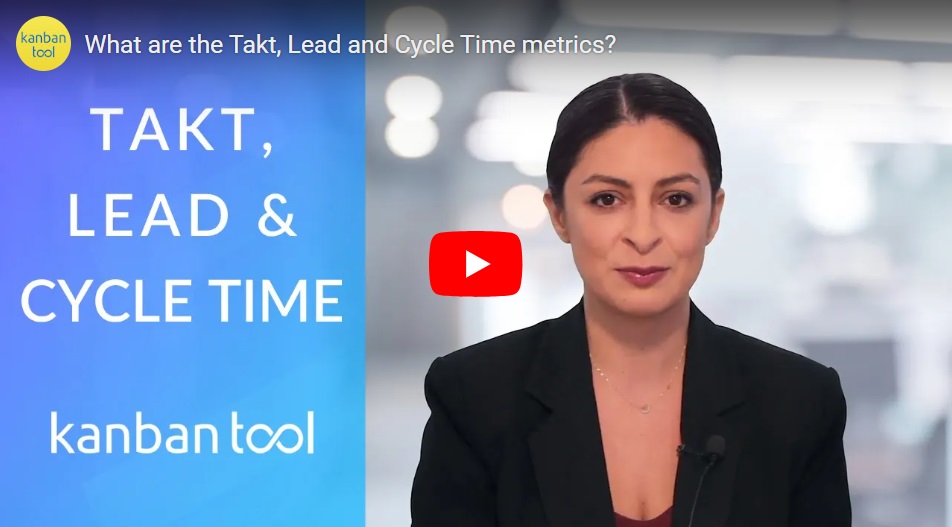What is Takt Time?

Takt time indicates the speed at which you need to manufacture a product to satisfy customer requirements. Specifically, it’s the time elapsed between starting work on two consecutive items.
Lean companies use the takt time metric to set the speed of production lines and define just-in-time processes. It allows them to perfectly match their client demand and maintain a continuous flow through the system.
How to calculate takt time?
With takt time being the total available working time divided by the number of units that a customer demands, determining its value should not be hard, provided that you have the accurate data on hand.
Step 1: Gather information about the available working time
The formula can base on the time available in a day, an hour, a week, etc., depending on what’s best for your process. Learn how many hours there are within the allocated work period.
Step 2: Get data about the demanded number of units
Whether your clients have repeatable orders or require varied numbers of products each iteration, you need to know the exact total value ahead of time.
Step 3: Divide the two numbers
Finally, divide the available working time value by the number of units that the customer requested. The number you get is the maximum length of time you should spend on manufacturing a single production item.
Example
| Activity | Daily amount |
|---|---|
| Total working time | 8 hrs |
| Lunchtime | 0.5 hrs |
| Maintenance | 1 hr |
| Units demanded | 10 |
The available time will be
8 x 60 minutes = 480 minutes, minus the 30 minutes break and then 60 minutes of downtime.
It makes for 390 minutes of total available working time.
The takt time is therefore 390/10. It suggests producing one item every 39 minutes if the system is to meet the customer demand.
Takt time vs cycle time vs lead time
The cycle time describes how long it takes to produce one unit of a product from start to finish - it concerns active working time only. The takt time relies on how soon the customer needs the product and calculates the total time for completing the delivery. Lead time measures the period between the customer placing the order and receiving it; production queues, rework, and transport included.
You could think of it in this way: cycle time measures the supply, while takt time describes the demand, and lead time deals with internal flow and process efficiency.
Why should you gauge the takt time?
Because takt time ties to how often and how much of a product your customer demands, calculating it allows you to gauge the speed you need to be working to satisfy the customer. If your team produces too slowly, then the customer may move their business elsewhere. If you manufacture too much or too quickly, the inventory will increase, leading to waste and a profit reduction.
Also, takt time gives managers and staff an indication of how things are progressing. The team and the manager can easily see if they are behind or in front of the required production pace.
The takt time should be similar to or slightly over the throughput time, which measures how long it takes to produce one item. Takt time indicates how long it should take.
What can you do to better meet the process’ takt time?
There are a few ways to get closer to aligning the process with the calculated takt time:
- Map out your value stream, optimize the processes
Examine your value stream, trying to find ways of removing waste and optimizing actions to match the takt time. Inserting the takt time into each element of the value stream presents the standard you are working towards to shareholders and team members alike.
Did you know?
Kanban Tool® allows you to map your process in a visual, simple, and shareable way. You can also attach the desired takt time value to each task or a given process stage. Try now!
- Conduct a 5S Initiative
Using 5S will often reduce the cycle time and increase throughput, which will make it possible for you to match the takt time more closely. - Conduct Heijunka
A common challenge with takt time is that it can vary from order to order. Once you’ve optimized your processes, it would be beneficial to look at introducing Heijunka. It can level out customer orders, contributing to your production also remaining steady. Observing the takt time can help you measure the maturity degree of Heijunka in your facility, as it is strictly related to customer orders. Direct collaboration between you and your customer will help you better understand the takt time and simplify aligning it with your process. - Increase production flexibility
Finally, if the processes are optimized, another factor you could look at is the increase in your production’s agility, letting you better adapt to takt time fluctuations. It might mean introducing flexible working arrangements (i.e., internal workforce on-demand relocation, or calling in external temporary workers) – all to perfectly align production with the changing takt time. However, make sure to take these measures only when necessary, since an increase in the number of employees and equipment in an already inefficient process can further aggravate the problem.
Main benefits of adhering to customers’ takt time
Through working towards maintaining the best possible alignment between your production and the required takt time, you will:
- optimize your process flow and decrease downtime through faster bottlenecks and underperformance identification
- deliver to the customer in a timely, predictable, and reliable manner
- minimize excess inventory
